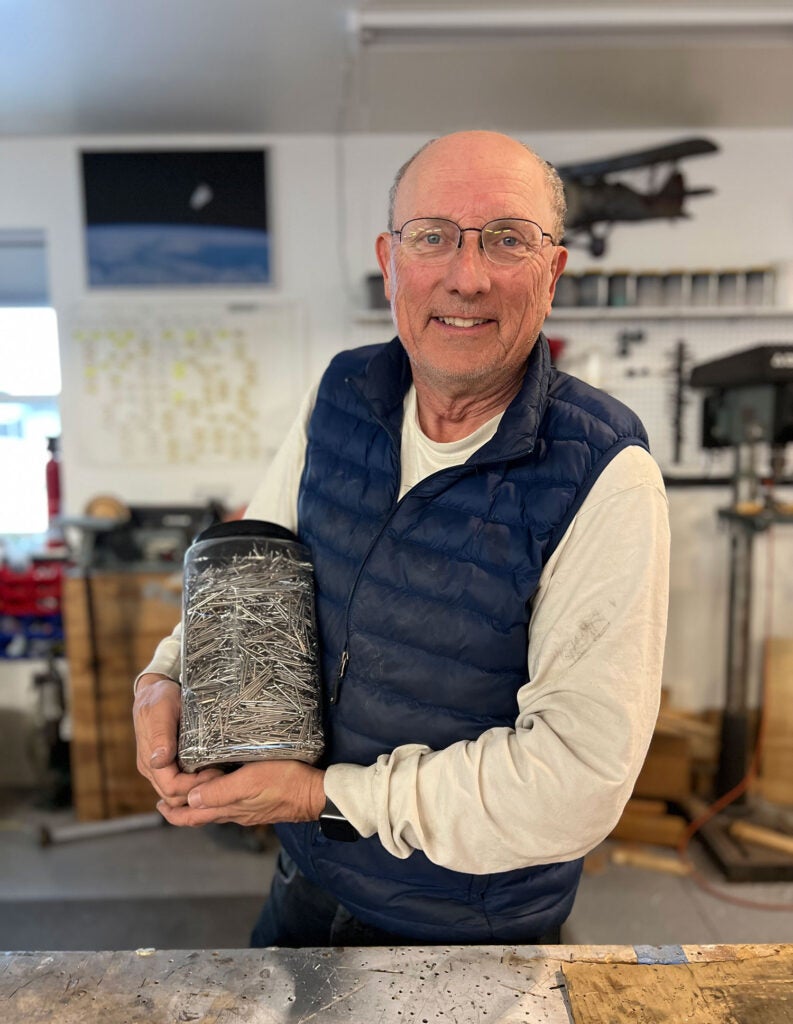 All that’s left before the eXenos takes to the air is the FAA to come out and give us an Airworthiness Certificate, so I guessed it was finally time to close the lid on the rivet mandrel container and show just how many rivets it takes to build the long-winged Sonex! No, we’re not going top count them – but this represents about seven years of (on-again, off-again) work on the slow-build kit. This one was slow enough that we even built the spars, so the total rivets really do represent an entire airframe.
All that’s left before the eXenos takes to the air is the FAA to come out and give us an Airworthiness Certificate, so I guessed it was finally time to close the lid on the rivet mandrel container and show just how many rivets it takes to build the long-winged Sonex! No, we’re not going top count them – but this represents about seven years of (on-again, off-again) work on the slow-build kit. This one was slow enough that we even built the spars, so the total rivets really do represent an entire airframe.
The container – familiar to anyone that shops at Costco and enjoys those little peanut-butter-pretzel snacks – is full to the brim. That’s fuselage, wings, tail, and any accessories such as gear leg fairings and cowl attachments. Top be completely open, we probably used a few solid rivets here and there for minor things like cowling attach hinges, but the airplane is 99% built exactly to plans. Well, except for the firewall forward installation of the electric motor.
We’ll keep you up to date on the process of getting it in the air—as soon as we figure out how to fill out the online “paperwork” system that the FA has instigated since our last completion.














Paul, You must have missed a few. I built a standard Sonex TD, and my jar looks to be slightly larger than yours, 6″ OD, filled to 10″ weight 21 Lbs, 7.6 Oz. I called it my completion gauge. When full call for inspection. Sonex: — 11,000 SS rivets held in close flying formation by a minimum amount of aluminum.
Great to know we’ve got other engineers building airplanes David…artists wouldn’t have kept track!
I pulled out my scale, and our container weighs 25.6 lbs – long wings you know…..
Curious to know how the weight of batteries is treated. Are they counted as part of the empty weight or are they counted as fuel?
Batteries are part of the empty weight – permanently installed, and they always weigh the same.